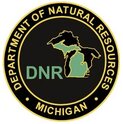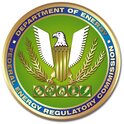 Bureau of Land Management/Forest Service (BLM/USFS) is responsible for easements on certain Federal public lands.  Michigan Department of Environment, Great Lakes, and Energy (EGLE) is responsible for regulating the impacts to inland lakes, streams, wetlands, and the Great Lakes from pipeline projects.  Pipeline and Hazardous Materials Safety Administration (PHMSA) develops regulations and other approaches to risk management to assure safety in design, construction, testing, operation, maintenance, and emergency response of pipeline facilities.  U.S. Fish and Wildlife Service (USFWS) conducts consultations under the Endangered Species Act, Section 7, on any agency action that is likely to jeopardize the continued existence of any listed species or result in the adverse modification of critical habitat. |
 Department of State (USDOS) is responsible for approving pipelines that cross international borders.  Michigan Department of Natural Resources (MDNR) works, primarily through the EGLE permit process, to minimize harm to State threatened and endangered species, migratory birds, freshwater fish, and their supporting habitat.  U.S. Army Corps of Engineers (USACE) is responsible for permitting of pipeline work in the Great Lakes and connecting channels. Local government, including towns, cities, and counties, can coordinate and regulate development near pipelines with their land use authority. They can enact regulations governing the type of construction that can occur near existing pipelines, requiring consultation with the pipeline operator, establishing setbacks or a variety of other land use permit requirements. Local municipalities can also use land use authority for involvement with proposed new pipeline development within existing communities. |
 Federal Energy Regulatory Commission (FERC) is charged by Congress with determining whether interstate natural gas transmission projects are in the public convenience and necessity.  Michigan Public Service Commission (MPSC) is responsible for regulating the rates and services of natural gas and electric utilities, authorizing energy infrastructure proposals, and monitors the safety of inter- and intrastate natural gas pipelines. Historic preservation offices ensure the preservation of the prehistoric and historic resources of the United States and Michigan. Pipeline operators build and operate the pipelines. They must justify the need, plan the route, and obtain numerous local, State, and Federal permits and clearances prior to construction. |

